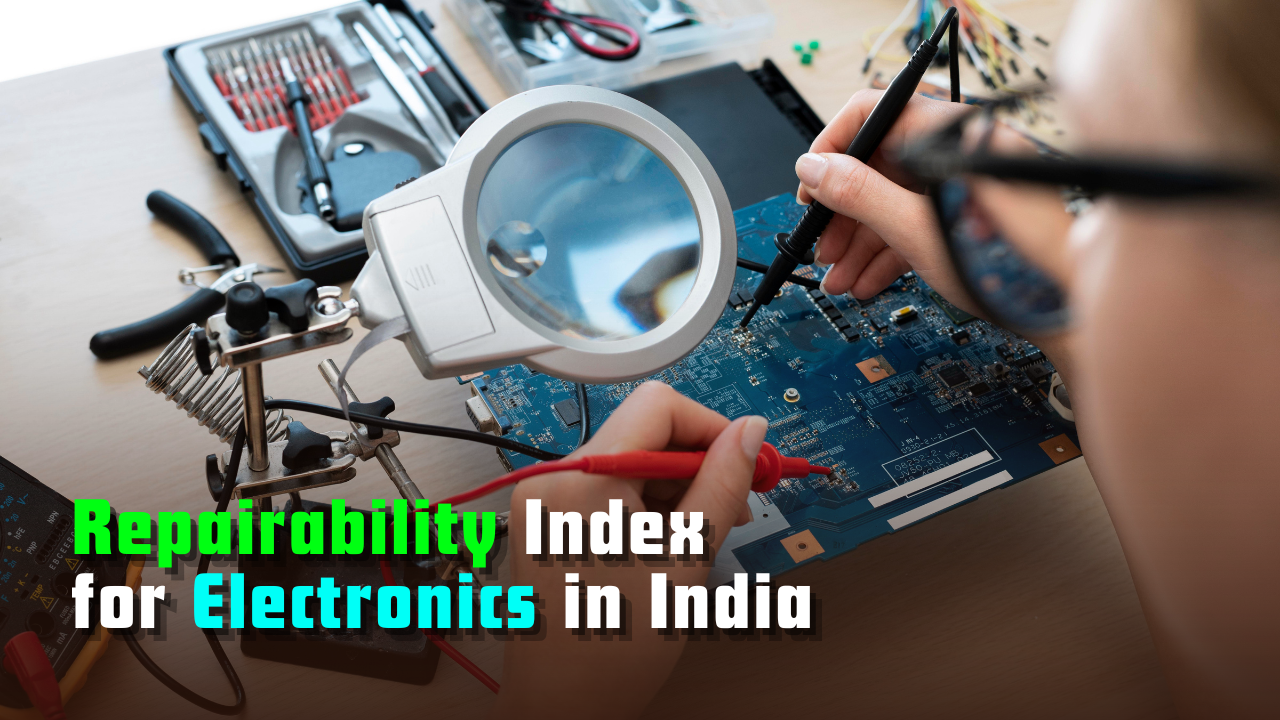Repairability Index for Electronics
Context: In May 2025, the Indian government took a major step toward promoting sustainable electronics by approving a proposal for a Repairability Index.
More on News About Repairability Index
- This initiative will rank mobile phones and appliances based on how easy they are to repair, availability of spare parts, and software support.
- Complementing this move, new e-waste management policies now offer minimum payments for formal recyclers, incentivising sustainability in the electronics sector.
- These developments align with global climate and circular economy goals.
Why Is Repair Work a Cultural and Intellectual Asset?
- As India moves toward a consumer right to repair, it must also treat repair not just as a service, but as a knowledge tradition.
- Much of India’s repair culture — from mobile fixers in Delhi’s Karol Bagh to appliance technicians in Chennai’s Ritchie Street — is powered by tacit knowledge: the hands-on, improvisational skill passed down informally across generations.
India’s right to repair movement has gained momentum with the launch of a government Right to Repair portal, which provides consumers with access to repair manuals, service centers, and spare part details for key sectors like electronics, automobiles, and farm equipment. However, India does not yet have comprehensive right-to-repair legislation mandating manufacturers to provide parts and information directly to consumers—its framework currently relies on voluntary participation by companies.
What Is Tacit Knowledge and Why Does It Matter?
- Tacit knowledge refers to skills and insights that are hard to formalise but crucial in practice.
- Unlike formal industrial skills, tacit repair knowledge is adaptive, context-sensitive, and deeply local.
- Yet, as AI and machine learning systems increasingly absorb patterns from real-world tasks, the communities whose labour fuels these systems are rarely acknowledged or included in policy-making or digital governance.
Are India’s Digital and AI Policies Ignoring Repair Workers?
- India’s digital transformation is led by frameworks like the Digital Public Infrastructure (DPI) and National Strategy on Artificial Intelligence (NSAI). These initiatives rightly focus on data-driven governance and innovation.
- However, they have largely overlooked the informal repair sector, despite its foundational role in everyday technological resilience.
- India generated over 1.6 million tonnes of e-waste in 2021–22, ranking third globally.
- While the E-Waste (Management) Rules, 2022 introduced Extended Producer Responsibility (EPR), they underplay repair as a preventive strategy.
- Similarly, skilling programmes like the Pradhan Mantri Kaushal Vikas Yojana (PMKVY) and the National Education Policy (NEP) 2020 promote formal, standardised training but fail to support non-formal, experiential learning models practiced by repairers.
What Role Can AI and Digital Platforms Play in Repair Justice?
- The Ministry of Electronics and IT can embed repairability scores into AI and hardware standards.
- The Department of Consumer Affairs can expand the Right to Repair portal to include community expertise and device classification.
- e-Shram (Ministry of Labour) can formally recognise informal repairers and connect them with social protection schemes.
- The Ministry of Skill Development can design new courses that respect tacit, diagnostic skills.
- Additionally, Large Language Models (LLMs) can be trained on repair stories and diagnostic workflows, preserving knowledge without erasing its context.
Subscribe to our Youtube Channel for more Valuable Content – TheStudyias
Download the App to Subscribe to our Courses – Thestudyias
The Source’s Authority and Ownership of the Article is Claimed By THE STUDY IAS BY MANIKANT SINGH





